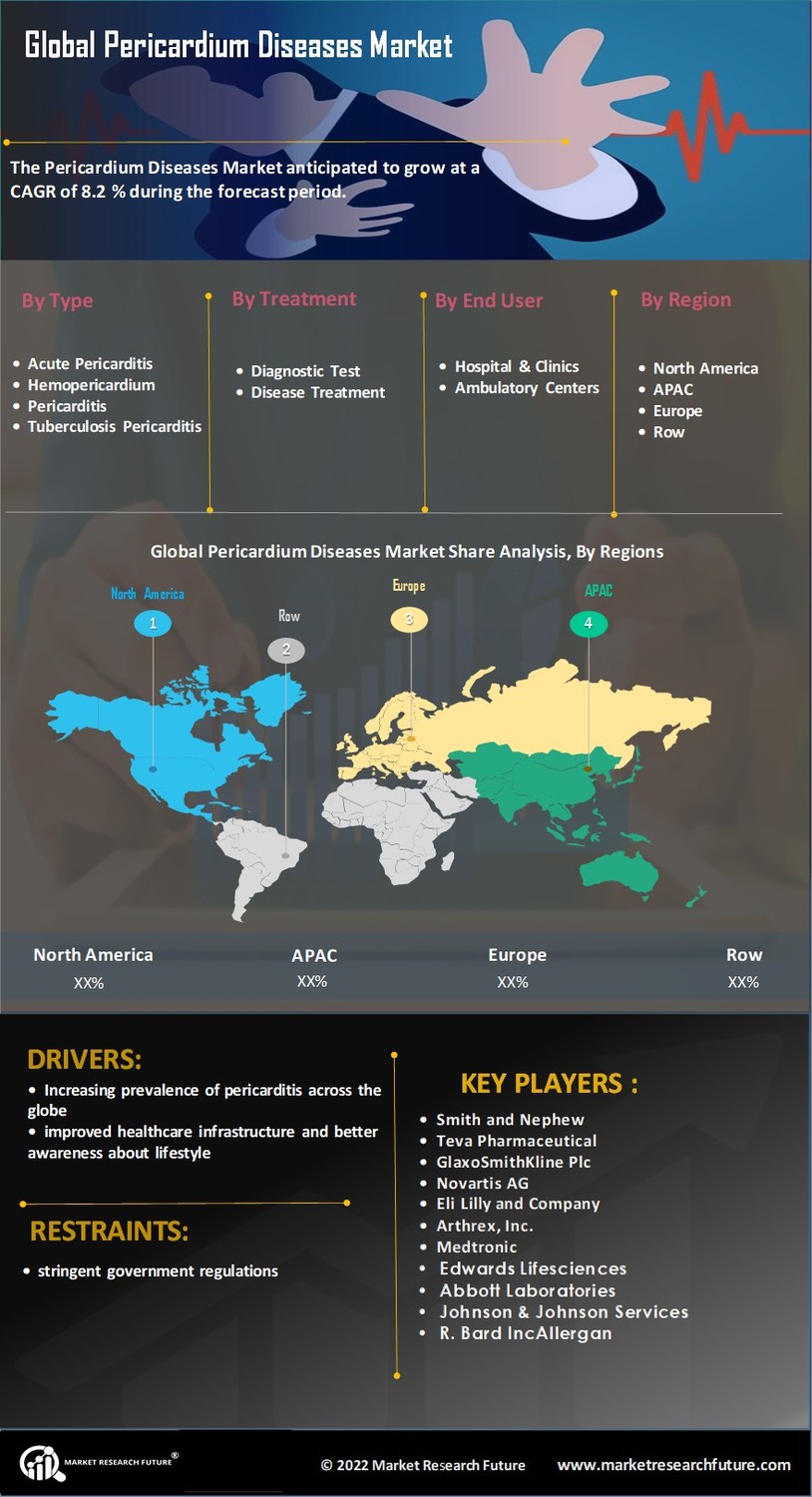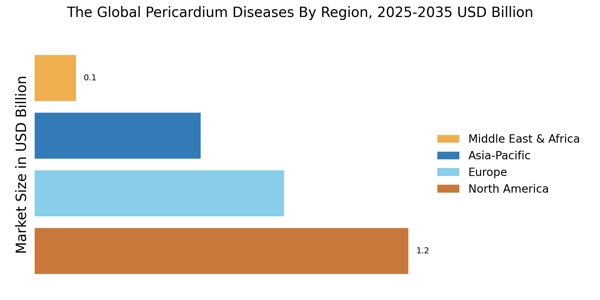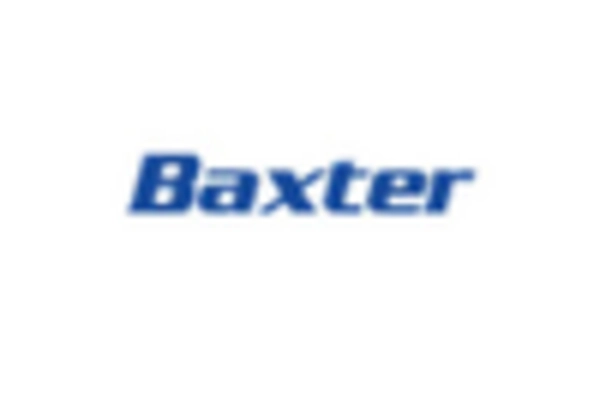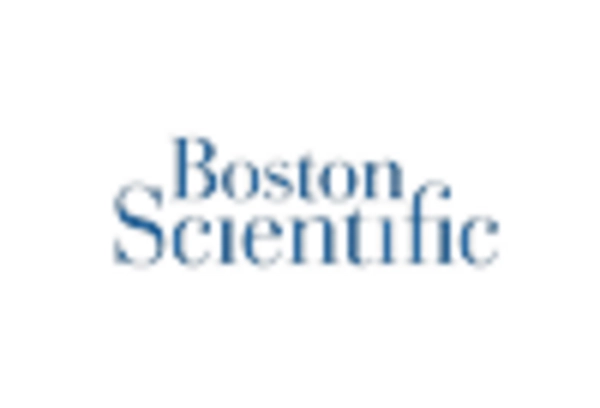Emergence of Targeted Therapies
The emergence of targeted therapies for the treatment of pericardium diseases is poised to drive The Global Pericardium Diseases Industry. Recent research has focused on developing medications that specifically address the underlying causes of pericardial conditions, such as inflammation and infection. These targeted therapies offer the potential for more effective treatment options with fewer side effects compared to traditional therapies. As clinical trials continue to yield promising results, the adoption of these innovative treatments is expected to rise. This shift towards more personalized and effective treatment modalities may lead to improved patient outcomes and satisfaction, thereby fostering growth within the market.
Advancements in Medical Technology
Technological innovations in medical devices and diagnostic tools are significantly influencing The Global Pericardium Diseases Industry. The introduction of advanced imaging techniques, such as echocardiography and MRI, has improved the accuracy of diagnosing pericardial diseases. These advancements enable healthcare providers to detect conditions at earlier stages, which is crucial for effective management. Moreover, the development of minimally invasive surgical techniques has transformed treatment options, allowing for quicker recovery times and reduced hospital stays. As the market continues to embrace these technological advancements, it is expected that the overall quality of care for patients with pericardium diseases will improve, thereby driving market growth.
Rising Awareness and Education Initiatives
The increasing awareness of pericardium diseases among the general population and healthcare professionals is a significant driver for The Global Pericardium Diseases Industry. Educational campaigns and initiatives aimed at promoting heart health are becoming more prevalent, leading to a better understanding of symptoms and risk factors associated with pericardial diseases. This heightened awareness encourages individuals to seek medical attention sooner, which can lead to earlier diagnosis and treatment. Additionally, healthcare providers are receiving more training on recognizing and managing these conditions, further contributing to improved patient outcomes. As awareness continues to grow, it is anticipated that the demand for diagnostic and therapeutic solutions will also increase, thereby positively impacting market dynamics.
Increasing Incidence of Pericardium Diseases
The rising prevalence of pericardium diseases is a notable driver for The Global Pericardium Diseases Industry. Factors such as urbanization, lifestyle changes, and an aging population contribute to this increase. According to health statistics, the incidence of pericarditis and other related conditions has shown a steady rise, with estimates suggesting that pericardial diseases affect approximately 1 in 1000 individuals annually. This growing patient population necessitates enhanced diagnostic and therapeutic options, thereby propelling market growth. Furthermore, the increasing awareness of heart-related ailments among healthcare professionals and patients alike is likely to lead to earlier diagnosis and treatment, further stimulating demand within the market.
Growing Investment in Healthcare Infrastructure
Investment in healthcare infrastructure is a critical driver for The Global Pericardium Diseases Industry. Governments and private entities are increasingly allocating resources to enhance healthcare facilities, particularly in developing regions. This investment is aimed at improving access to diagnostic and treatment services for cardiovascular diseases, including pericardium diseases. Enhanced healthcare infrastructure facilitates the establishment of specialized cardiac care units, which are essential for managing complex cases. As a result, the market is likely to experience growth as more patients gain access to necessary care. Furthermore, the expansion of telemedicine services is also contributing to this trend, allowing for remote consultations and follow-ups, which can be particularly beneficial for patients with pericardial conditions.


















Leave a Comment